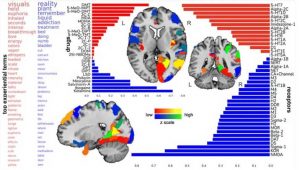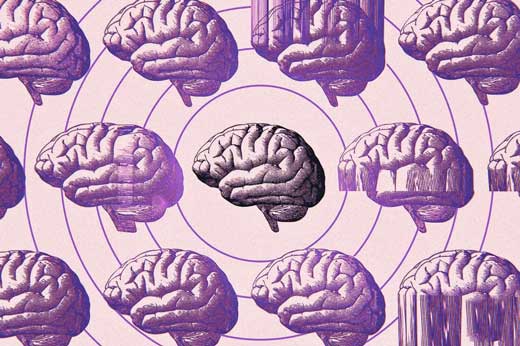Individuals have immense, spiraling encounters on hallucinogenic medications, frequently getting back from a stimulating outing brimming with new points of view toward their life or even changes to their character. They depict the excursions with striking, enthusiastic language – which could possibly let analysts know which parts of their minds are responding to the medications.
To sort out how and why hallucinogenics trigger specific encounters, an examination group utilized AI to haul normal words and expressions out of individuals’ tributes about their excursions. Then, at that point, in another review distributed Wednesday, the specialists connected those words to the pieces of the cerebrum affected by the medications.
It’s an alternate way to deal with concentrating on drugs and the cerebrum: typically, specialists hoping to see how substances map onto mind locales would request that individuals take the medication prior to having their cerebrum filtered. This system, however, centered more around how the medications caused individuals to feel, and afterward worked in reverse to view the regions probably as answerable for that inclination.
Endeavors to involve stimulating medications as mental treatments have zeroed in on their capacity to accomplish an encounter called “self image disintegration” – a feeling of separation and loss of healthy identity, which backers think can assist with peopling reset their assumptions and wrestle with stressors. Self image disintegration has regularly been related with LSD, or corrosive, and psilocybin, the compound found in hallucinogenic mushrooms. Those medications focus on a receptor in the mind called 5-HT2A.
Yet, this review, distributed in the diary Science Advances, observed that medications chipping away at different receptors in the cerebrum, similar to the D2 receptor, were connected with comparable sentiments. That opens different focuses for researchers or drug organizations attempting to make new medications that could attempt to make a similar encounter, or for specialists attempting to comprehend the underlying foundations of psychological well-being difficulties.

The investigation screened 6,850 tributes from individuals who ingested 27 different stimulating medications – every one of which was at that point connected with a somewhat unique arrangement of collaborations with receptors and locales in the mind. It pulled watchwords like visuals, reality, sickness, pitch, and moving from the tributes to make groups of comparative encounters, then, at that point, contrasted them with what’s had some significant awareness of the manners in which the medications in every tribute collaborated with the mind.
Alongside the discoveries on inner self disintegration, the concentrate additionally distinguished medications and mind receptors connected with visual and hear-able encounters, dread, actual encounters, and the progression of time. It observed that optical pipedreams may be connected to cerebrum locales that aren’t regularly connected with vision, for instance. They likewise observed that individuals’ inside clocks respond various approaches to various sorts of medications – some extended time, others compacted it.
Individuals regularly have various responses to taking similar medication, the creators noted in the paper. However, this review, and its utilization of AI to take out shared characteristics between those encounters, shows that it’s feasible to distinguish predictable subjects that could apply from one individual to another.
“Our review gives an initial step, a proof of rule that we might have the option to fabricate AI frameworks later on that can precisely anticipate which synapse receptor blends should be invigorated to initiate a particular condition of cognizant involvement with a given individual,” concentrate on creator Danilo Bzdok, a specialist at the Montreal Neurological Institute-Hospital, said in an articulation.




